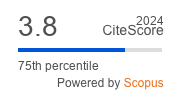Article | Open Access
Transformations of the Beirut River: Between Temporary and Permanent Liminality
| Views: | 1748 | | | Downloads: | 3910 |
Abstract: This article presents the case of the Beirut River corridor in Lebanon, which defines the administrative border between the capital Beirut, its eastern and south-eastern suburbs. The Beirut River has undergone several transformations from being a lotic environment to becoming complex urban infrastructure. This is often unnoticeable due to the scarcity of its running water and its walled existence at the edge of administrative boundaries. The separation from its riverbanks, disconnection from the urban fabric, and continuous pollution have contributed to its liminality, being simultaneously neither present nor absent. To understand this in-betweenness, the river’s spatial, temporal, and social liminality are analysed by identifying major events, actors, and key urban planning interventions that impacted the river at the national, city region, and local scales. The article explores the development of the river corridor both in terms of urbanisation and population dynamics; its distinct positionality in different periods that corresponded to major events and decisions made; and the contrasting river experiences and perceptions across generations, which vary between reminiscence and aversion. By examining the various transformative processes, collective practices, perceptions, and diverse actors, the article highlights the contextual implications of this obdurate liminality, but also Beirut River’s potential alternative future positionality amidst present and imminent urban challenges.
Keywords: actors; Beirut River; border; canalisation; liminal; scale; social practices
Published:
© Christine Mady. This is an open access article distributed under the terms of the Creative Commons Attribution 4.0 license (http://creativecommons.org/licenses/by/4.0), which permits any use, distribution, and reproduction of the work without further permission provided the original author(s) and source are credited.


